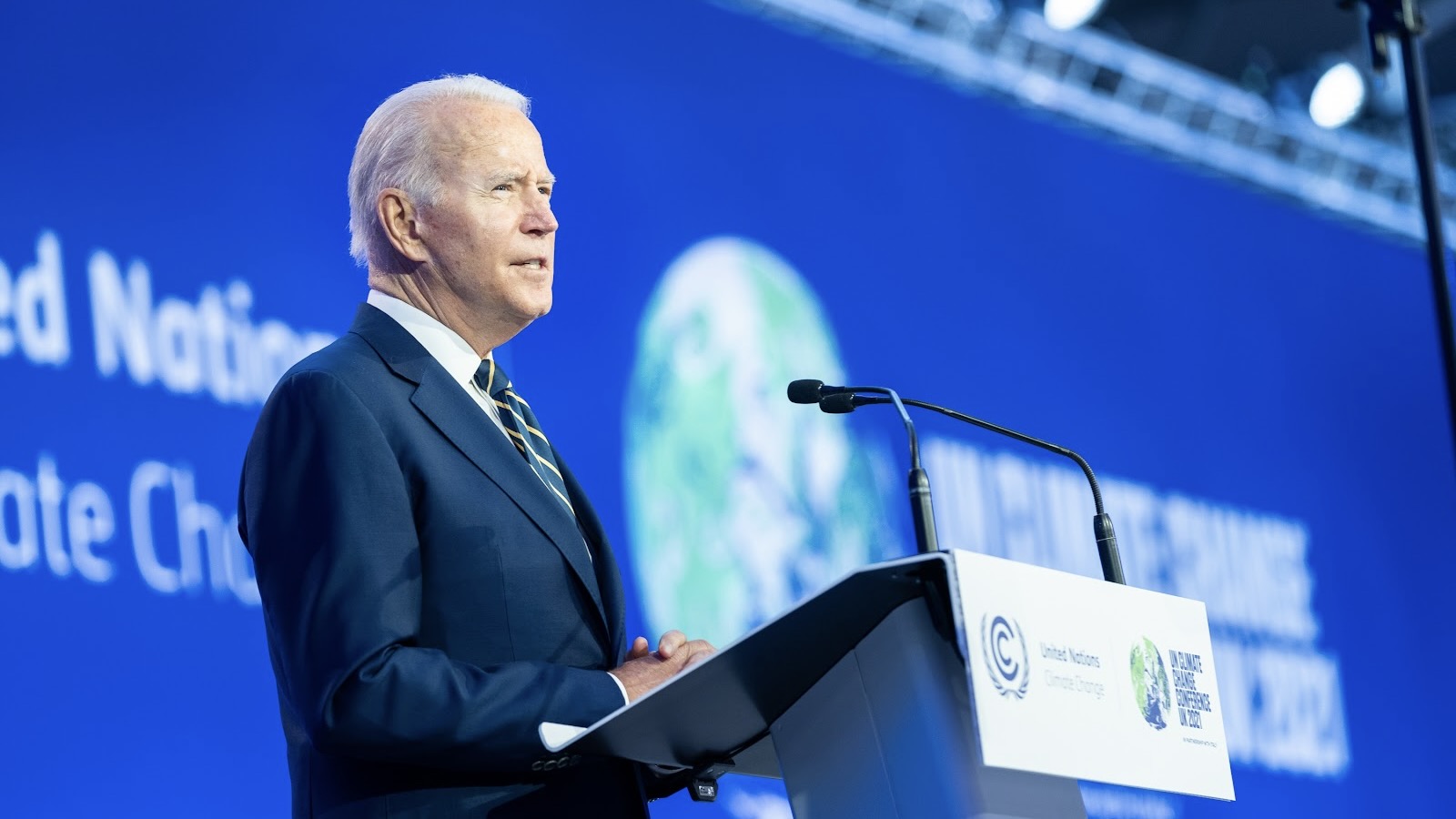The UN Climate Change Conference of Parties or COP26 wrapped up its first few days with over 120 heads of state participating in the World Leaders Summit. The conference began on the heels of a disappointing climate policy outcome during the G20 summit and growing protests for more urgent action to reverse the impact of climate change. United Nations Secretary General António Guterres addressed the summit attendees on Monday, and emphasized “We are digging our own graves.”
Guterres’ words are a far cry from exaggeration. 85% of the world’s population has been impacted by weather events worsened by climate change.
US President Joe Biden made headlines with his proposal to establish regulatory measures to limit global methane emissions by 30% from 2020 levels by 2030. According to the International Energy Agency, the US is the second-largest emitter of methane in the world. Meanwhile, the Interior Department approved almost 2,500 permits to drill on public and tribal lands in the first six months of 2021.
Food & Water Watch Policy Director Mitch Jones stated, “The best regulation against methane emissions is to ban fracking and prohibit the use of methane in heating of newly constructed buildings.”
President Biden has repeatedly refused to ban fracking.
Biden also announced the Agriculture Innovation Mission for Climate or AIM, which the United States Agency for International Development describes as an initiative to “support research and innovation in climate-smart agriculture.” The two leading countries behind the initiative are the US and United Arab Emirates and it has received endorsements from agribusiness multinationals like Bayer-Monsanto and Syngenta as well as corporate lobbying firms like CropLife and World Economic Forum. Critics say AIM is just an attempt to push corporate-driven agriculturalism and lead to more hunger, poverty and unequal distribution across the globe.
Biden's announcement of #AIM4Climate is about Big Agribusiness corporations trying to stay relevant through a new greenwash initiative.
Instead of solving the climate crisis it will just greenlight more pollution and marginalise smallholder farmers.
— Teresa Anderson (@1TeresaAnderson) November 2, 2021
While leading the globe in carbon emissions, the United States continues to lag in implementing policies to curb emissions and transition to green energy. The US military is the largest institutional consumer of fossil fuels in the world and emits more greenhouse gases than most mid-sized nations to keep its 800+ military bases running.
NEW | Analysis: Which countries are historically responsible for climate change? | @DrSimEvans
Cumulative fossil fuel & land emissions 1850-2021
🇺🇸 US 509GtCO2
🇨🇳 CN 284
🇷🇺 RU 172
🇧🇷 BR 113
🇮🇩 ID 103
🇩🇪 DE 88
🇮🇳 IN 86
🇬🇧 UK 74
🇯🇵 JP 68
🇨🇦 CA 65https://t.co/9xUpHUKefKTHREAD pic.twitter.com/730aW4GOuY
— Carbon Brief (@CarbonBrief) October 5, 2021
Executive director of the Sunrise Movement, Varshini Prakash, stated “Biden is at Glasgow empty-handed, with nothing but words on paper. It is humiliating and fails to meet the moment that we’re in.”
President Biden spent most of his time at mic lauding his Build Back Better agenda, despite the fact that the most critical measure on climate will likely be gutted from it. The $150 billion Clean Electricity Performance Program would fund the replacement of gas and coal-powered plants with wind, solar and nuclear energy and get the US halfway to Biden’s goal of cutting emissions in half by the end of the decade. Instead, the president is offering $500 billion in corporate tax credits for renewable energy and other climate-saving measures, a much less concrete and reliable strategy to cut down carbon emissions.
Biden also took the time to deflect from this grim chance for progress on climate change at home and attack China for joining the event virtually, claiming that President Xi Jinping made a “big mistake.” His comments reflect a larger effort by US and European policymakers and Western media outlets to place the ultimate responsibility for defeating climate change on China.
In reality, the US has produced twice the amount of CO2 as China, accounting for 25% of historical emissions globally. China is set to lead the world in funding for green energy transfers, its financing for green energy increased fourfold in just four years. Chinese financial institutions are funding some of the largest solar-powered energy projects in the world, as well as wind-powered energy, from Kenya to Argentina.
Brandon Wu, the Director of Policy & Campaigns at ActionAid USA told BreakThrough News, “We actually calculated [a few months ago] and came up with a figure that the US has to do the equivalent of reducing its emissions by 195% by 2030, from 2005 levels.” He continued, “But we’re talking about a climate crisis where it’s already too late and we have to act with as much urgency as possible right now … so what we’re saying about the COP is that whatever the US is coming to the table with is pathetically insufficient..”
Monica Cruz is a reporter with US-based media outlet Breakthrough News.





